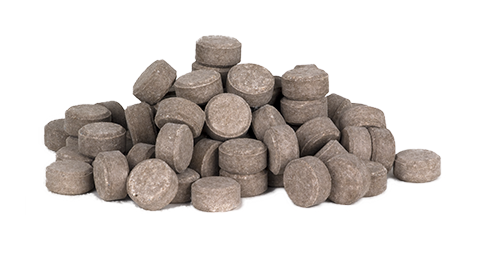CONTRIBUTION TO A SUCCESSFUL GROWING OF STRAWBERRY
Strawberry growing is still very popular among hobby gardeners. Strawberries are appreciated above all for their taste, strong aroma, high nutritional value and dietetic properties. At the same time, they are also valued for their regular productivity and earliness. They keep their nutritive value and content of compounds important for human health even in preserved condition.
Sandy-loamy soils with a good content of humus and nutrients, with enough water, neutral to slightly acid and with groundwater level up to 0.5 m are the most suitable for growing of strawberries. Strawberries have a relatively shallow root system but the depth of ploughing layer should be at least 25 cm. As far as the climatic conditions are concerned, the most suitable are regions with average annual temperatures between 7 and 8 oC and average annual precipitation about 600 mm.
Strawberry growing, however, has also some problems. Health condition of plants, irrigation and correct nutrition in the course of growing season belong to the most important factors limiting results of strawberry growing. We have investigated this problem in 1995 - 1998. In extensive experiments, we have studied possibilities of an optimum nutrition of strawberry stands using a slow-releasing stock fertiliser.
To assure an optimum nutrition of strawberry plants in the course of growing season is very important because their root system is shallow and in some soils they even may suffer from a lack of some nutrients. They show the highest requirements of nutrients (above all nitrogen) in early spring (i.e. during the period of an intensive growth of leaves), just before flowering, and after the harvest (differentiation of flower buds, growth of runners, accumulation of store substances for further growth and formation of leaves). When using classical mineral fertilisers, the stock dose of nutrients is mixed with substrate and the reserves on nutrients are replenished at certain intervals by application of supplementary doses of these fertilisers. This method has certain disadvantages, viz. a higher risk of loss of nutrients due to leaching, a rather difficult estimation of exact terms of supplementary fertilisation and a higher consumption of labour. Stock fertilisers enable to simplify the system of fertilisation. Combinations of various forms of essential nutrients and trace elements in multicomponent stock fertilisers enable to supply nutrients to plants continuously and harmonically. Easily soluble forms of elements (above all nitrogen) must assure the supply of nutrients at the beginning of growing season while in its course the needs of plants are satisfied continuously and without any accumulation of nutrients in substrate. When using stock fertilisers, the total dose can be put into the soil either when planting strawberries in the autumn or at the beginning of growing season. There is no danger of over-fertilising due to a low solubility of pellets. The time of efficiency of these special fertilisers is dependent on the type and dose of fertiliser, properties of soil and climatic conditions. The interval of declared efficiency ranges from two months to two years.
In our experiments Czech pelleted fertiliser Silvamix Forte was used. This is a special full pelleted fertiliser with a long-term release of nutrients in a low-soluble form. This fertiliser is based on an urea condensate (slowly efficient source of nitrogen) and on diphosphates (slowly efficient phosphorus, potassium and magnesium). For acute needs of plants it has also a low proportion of easily soluble nitrogen compounds.
Table 1 Specification of nutrient contents in some fertilisers
| Fertiliser | Percentages of individual nutrients | |||
|---|---|---|---|---|
| N | P205 | K2O | MgO | |
| Silvamix Forte | 17.5 | 17.5 | 10.5 | 9.0 |
| Cererit | 10.0 | 9.0 | 14.0 | 1.3 |
When planting strawberries in the autumn, it is better to apply pelleted fertilisers to plants early in spring of the next year because plants may use completely the starting dose of easily available nitrogen. Depending of the quality of soil and the content of available nutrients, two to four pellets should be applied to each plant. Pellets may by either put into the soil or they may stay on the soil surface. In our experiments good results were obtained in both cases. If put only on the soil surface, however, there is a danger of their mechanical movements (by irrigation water) or they may attract attention of children. When planting strawberry fields with the use of black plastic foil or non woven textile it is better to put these pellets directly into the soil at the moment of planting.
A long term effect of stock fertilisers (e.g. Silvamix Forte is efficient for two growing seasons) may be increased by an application of liquid fertiliser before flowering and after the harvest, i. e. in the period of an increased need of nutrients.
Lednice 1999


























